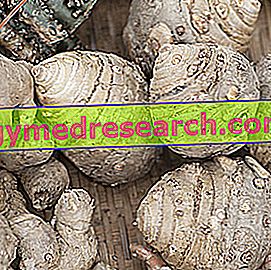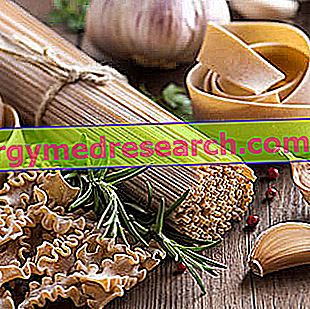Generality
Hirsutism is a condition characterized by the anomalous presence, in the woman, of hard and coarse hairs, extended in typical sites of the male (upper lip, chin, abdomen, back, around the areola of the nipple, central chest).
In women with hirsutism there is also a lozenge arrangement of pubic hair.

Hirsutism and Hypertrichosis
What are the differences between hirsutism and hypertrichosis?
Although many do not make this distinction, hypertrichosis and hirsutism are terms with different meaning. While hypertrichosis expresses the increase of hair in areas where they are normally present; hirsutism indicates, not so much an increase in the hairiness of the woman, as a distribution and an aspect of the typically male hair. Hair may appear on the face, chest or back of the hands and feet.
In summary, while hypertrichosis is a purely quantitative problem, hirsutism, regional or widespread, has a meaning of alteration of the quantity and above all of the piliferous quality.
At this point a further clarification is needed. In fact, we must not forget that - while in hypertrichosis abnormal hair growth is supported by local factors - hirsutism is more often linked to general endocrine disorders.
A patient who complains of an increase in hair in typically female areas should therefore be reassured of the "benign" origin of the disorder.
In the case of hirsutism it is instead advisable to perform a thorough hormonal dosage, in order to exclude the presence of serious pathologies, all the more likely as the onset of the disorder is rapid and tumultuous.
In the case of prolonged intake of strong androgens or physiological hyperproduction of testosterone, hirsutism is often accompanied by defeminization (amenorrhea, oligomenorrhea, mammary hypotrophy, etc.) and virilism (clitoral hypertrophy, fading and lowering of the tone of the voice). The presence of one or more of these symptoms suggests the need for further diagnostic investigations, on the contrary the absence of complications is due to the benign nature of the pathology.
Hirsutism and Testosterone
What is the role of testosterone in the appearance of hirsutism?
The relationship between androgens and problems such as seborrheic cuti, acne and hirsutism itself is fairly well known. Often, however, the right importance is not given to the quantity of testosterone metabolites (dihydrotestosterone and androstenediol glucuronide), formed within the hair bulb by particular enzymes such as 5-alpha reductase I and II.
While there are many cases of hirsutism characterized by physiological testosterone levels, the concentration of the aforementioned enzyme in the areas where the problem is most evident, can be five to twenty times higher than the values found elsewhere.
Often hirsutism is also caused or aggravated by other predisposing factors, such as low levels of SHBG (the proteins that carry circulating testosterone, inactivating it), a drop in estrogen or an increase in the number of androgen receptors.

The development of the hair system is conditioned by genetic and hormonal factors. Although this data may surprise, the number of pilo-sebaceous units in the various skin regions is the same in both sexes. The major development of hair in the male is linked to the secretion of androgenic hormones, which is clearly superior to that of women.
To learn more: Hypertrichosis and hirsutism
Diagnosis
Before resorting to laboratory tests, the initial diagnosis of hirsutism is often based on simple semi-objective criteria. Ferriman and Gallwey have developed a practical table for a quick and indicative diagnosis of the disorder. Based on the quality and density of hair in the various areas of the body, a score ranging from 1 (not very evident disorder) to 4 (marked) is given. In order to be able to talk about hirsutism, the score deriving from the sum of the individual values must be greater than eight.

To learn more: Hirsutism diagnosis »
Causes
In relation to the cause of origin, hirsutism can be differentiated into:
- Ovarian (95% of cases: polycystic ovary, tumoral forms).
- Adrenal (3% of cases: hyperfunction, hyperplasia, tumor forms)
iatrogenic (1-2% of cases: glucocorticoids, anabolic / androgenic steroids).
- Idiopathic (arises without any apparent cause).
Hirsutism can be linked to endocrine diseases affecting the adrenal glands, which are the main testosterone producers in women. Some types of tumors, such as those affecting the ovary and the adrenal itself, may also be responsible for the problem.
Sometimes hirsutism is not associated with evident pathologies or determinant predisposing factors; in these cases we speak of idiopathic hirsutism. In recent years its incidence has undergone a constant reduction, proportional to the new scientific acquisitions in the endocrinological field. The discovery of new diagnostic methods has, in fact, allowed to ascribe the origin of many idiopathic forms to precise hormonal factors.
While adrenal hirsutism or ovarian dysfunction arises due to excessive testosterone secretion, in idiopathic forms it is more likely that an abnormal cellular sensitivity to androgens is at the origin of the disorder.
Hirsutism can also have an iatrogenic origin, linked to the intake of some drugs (androgenic hormones, corticosteroids and anabolic steroids).
To learn more: Causes of irsutism »
Care and Treatment
If hirsutism is accompanied by signs of virilization and drug treatment is ineffective or not recommended, surgical removal of the overproducing organ is used. On the contrary, in the case of idiopathic hirsutism, after carefully evaluating the patient's hormonal pattern, we will proceed with the administration of suitable drugs, active at various levels (see: Vaniqa). Some of them reduce the synthesis of testosterone and / or increase the estrogen synthesis, others inhibit their conversion to dihydrotestosterone (DHT) and still others hinder the binding of DHT with endocellular receptors.



